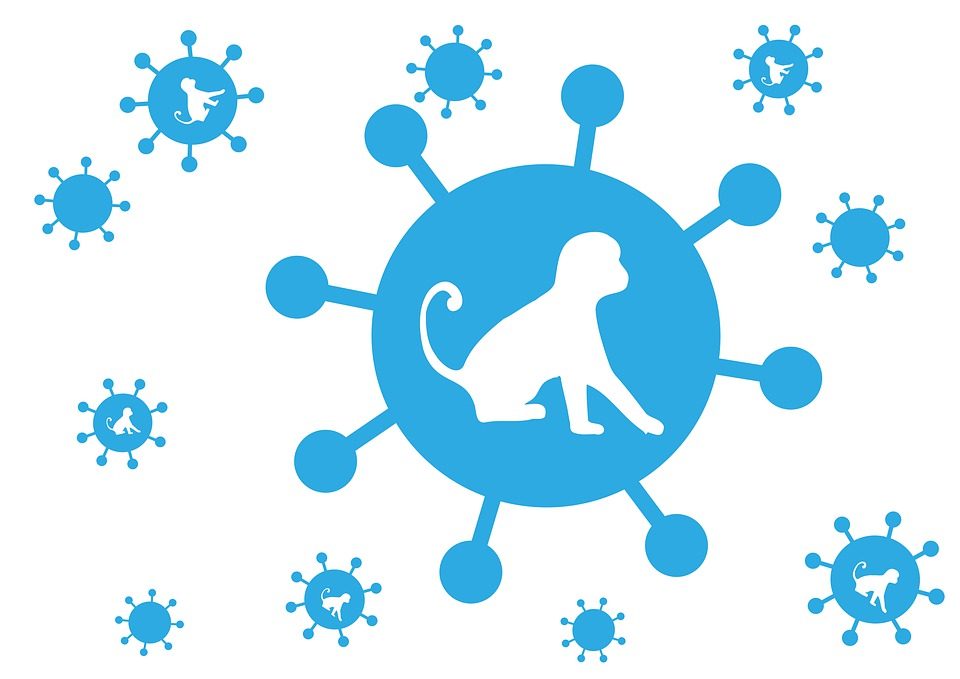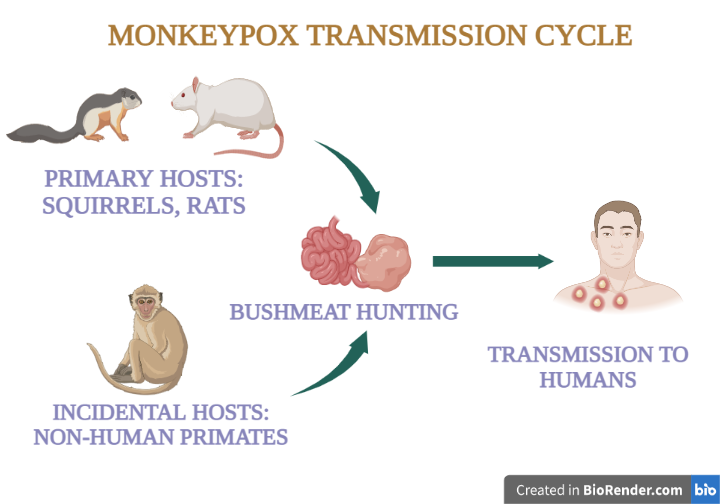What exactly is monkeypox?
Monkeypox is an uncommon disease caused by the monkeypox virus, which is related to smallpox and belongs to the same virus family. In 1958, the monkeypox virus was first found in laboratory monkeys for the first time. It has also been found in Africa across several rodents and primates.
Epidemiology of the disease:
Monkeypox is a viral zoonosis (a virus transferred to humans from animals) that has symptoms that are remarkably similar to those seen in smallpox patients in the past, however it is less severe clinically. The monkeypox virus, which belongs to the Poxviridae family’s orthopoxvirus genus, causes the disease. The virus was first discovered in monkeys in a Danish laboratory in 1958, and the term monkeypox was given to it. In the Democratic Republic of the Congo, the first human case was discovered in 1970 in a child.
Monkeypox is a global public health concern since it affects not only countries in West and Central Africa, but also the rest of the world. In the United States of America, the first monkeypox outbreak outside of Africa occurred in 2003, and it was connected to contact with infected pet prairie dogs. Gambian pouched rats and dormice had been smuggled into the nation from Ghana to house these pets.
Multiple cases of monkeypox were reported in many non-endemic countries in May 2022. Studies are currently being undertaken to acquire more about the epidemiology, infection origins, and transmission patterns.

How is monkeypox spread?
When people are bitten by a monkeypox-infected animal or come into contact with the blood, bodily fluids, or lesions of an infected animal or person, the monkeypox virus can spread to them. Monkeypox was recorded in the United States in 2003 among many persons who came into contact with infected pet prairie dogs who had come into contact with imported African rodents. The virus spreads through huge respiratory droplets from one individual to the next. Because these droplets can only travel a few feet, sustained face-to-face contact is required. Monkeypox virus can be passed from person to person by intimate contact or by contacting a person with monkeypox’s bodily fluids.

Fig: Monkeypox Transmission cycle
Signs and Symptoms:
Monkeypox symptoms are similar to smallpox symptoms in people, however they are less severe. Fever, headaches, muscle aches, and tiredness are the first symptoms of monkeypox. The fundamental distinction between smallpox and monkeypox symptoms is that monkeypox causes swelling of lymph nodes (lymphadenopathy), but smallpox does not. Monkeypox has an incubation period of 7-14 days, but it can be as short as 5-21 days.
Infection:
The infection can be sub-divided into two periods.
- The invasion stage (which lasts between 0 and 5 days) is marked by fever, severe headache, lymphadenopathy (swelling of lymph nodes), back discomfort, myalgia (muscle aches), and severe asthenia (lack of energy). Monkeypox has a distinct feature of lymphadenopathy when compared to other diseases that may appear similar at first (chickenpox, measles, smallpox).
- Within 1–3 days of the onset of fever, the skin eruption usually begins. The rash affects the face and extremities more than the trunk. The face, palms of the hands, and soles of the feet are all affected (in 95 percent of cases) (in 75 percent of cases). Oral mucous membranes (in 70% of cases), genitalia (30%), conjunctivae (20%), and the cornea (in 20% of cases) are also affected. The rash progresses from macules (flattened lesions) to papules (stiff, slightly elevated lesions), vesicles (clear fluid lesions), pustules (yellowish fluid lesions), and crusts that dry up and flake off. The number of lesions varies between a few to thousands.
Diagnosis:
Other rash disorders like chickenpox, measles, bacterial skin infections, scabies, syphilis, and medication-related allergies must all be examined in the clinical differential diagnosis. Monkeypox can be distinguished from chickenpox or smallpox by lymphadenopathy during the prodromal stage of illness.
If monkeypox is detected, health personnel should collect a suitable sample and transport it carefully to a laboratory with the necessary equipment. The kind and quality of the specimen, as well as the type of laboratory test, all play a role in confirming monkeypox. As a result, specimens must be packaged and sent according to national and international regulations. Because of its precision and sensitivity, the polymerase chain reaction (PCR) is the laboratory test of choice.
Prevention:
The main prevention method for monkeypox is to raise public knowledge of risk factors and educate individuals about how they can decrease their exposure to the virus. Vaccination for the prevention and control of monkeypox is now being evaluated in scientific trials. Some countries have policies in place, or are creating policies, to provide vaccine to people who may be at risk, such as laboratory workers, fast reaction teams, and health professionals.
There are several steps to take to prevent monkeypox.
- Avoid making contact with any animals that may be infected (including animals who are sick or that have been found dead in areas where monkeypox occurs).
- Avoid touching any bedding or other items that have come into contact with a sick animal.
- Separate infected patients from other people and animals who may be at danger of contracting the disease.
- When caring for infected patients, be sure you’re wearing appropriate protection.
- After caring for infected patients, wash your hands with soap and water or a hand sanitizer containing alcohol.
Vaccination:
Smallpox immunization protects monkeypox to an estimated 85 percent in several observational studies. As a result, smallpox immunization could lead to a milder illness. Newer vaccines have been developed, with one of them being approved for the protection of monkeypox.
Key points:
- Monkeypox is caused by the monkeypox virus, which belongs to the Orthopoxvirus genus and belongs to the Poxviridae family.
- Monkeypox is normally a self-limiting condition, with symptoms lasting between two and four weeks. Severe cases are possible. The case fatality ratio has been approximately 3–6% in recent years.
- Monkeypox is spread to people by coming into intimate contact with an infected person or animal, or by touching contaminated material.
- Close contact with lesions, body fluids, respiratory droplets, and infected surfaces such as bedding can spread the monkeypox virus from one person to another.
- Fever, rash, and swollen lymph nodes are the most common symptoms of monkeypox, which can lead to a variety of medical problems.
- A new outbreak of monkeypox cases, a rare viral disease generally found in Africa, is being investigated by health authorities in Europe, the United States, and Australia.
- Along with the United Kingdom, Spain, Portugal, France, Italy, and Sweden, Germany reported its first case of the virus on 27 May, 2022.
- Since 7 May 2022, the number of cases in the United Kingdom has doubled. There have been 20 confirmed cases in the country so far, but fears are growing that there could be more.
Keywords:
- Monkeypox
- Orthopoxvirus
- Emerging infectious diseases
- Zoonosis
- Disease outbreaks
- One health
References:
Centers for Disease Control and Prevention, National Center for Emerging and Zoonotic Infectious Diseases (NCEZID), Division of High-Consequence Pathogens and Pathology (DHCPP).http://www.cdc.gov/ncidod/monkeypox/index.htm.
